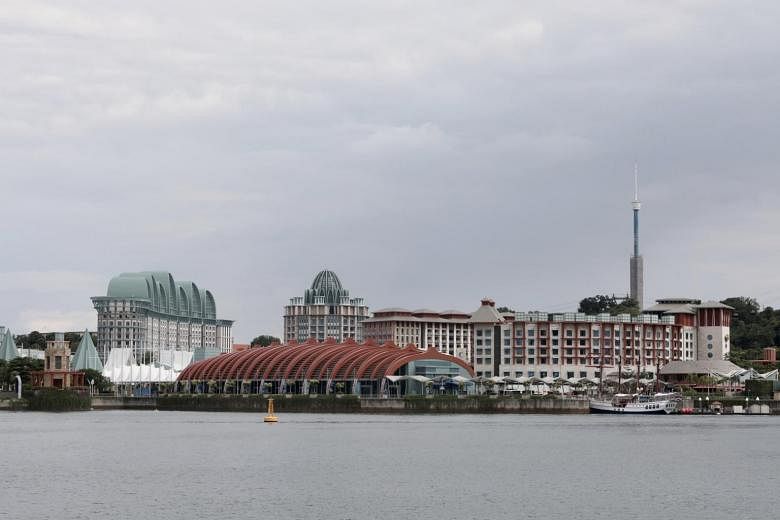The layoffs at Resorts World Sentosa (RWS) are a sign of things to come for Singapore's tourism sector, industry observers warn.
While mass retrenchments had up till now largely been prevented, job losses and business closures are likely to rise over the next two months, as wage subsidies end and firms grapple with the continuing tourist drought, they say.
As attractions, hotels and tour operators begin to reopen, they are turning to the local market and the pent-up demand from being cooped up at home during Singapore's two-month circuit breaker.
But the local market is too small to sustain the tourism industry, and with no end in sight to Singapore's restrictions on mass travel, things are looking bleak.
Visitor arrivals in April and May hovered at record lows of about 800, after Singapore took the unprecedented step of closing its borders to tourists in March.
Dr Kevin Cheong, chairman of the Association of Singapore Attractions (ASA), said many tourism establishments, including his own Sentosa 4D AdventureLand business, have been able to survive and retain most of their local staff, thanks to wage subsidies that will end next month.
"The worst will come when the money runs out and those who reopened have to face operating costs with little business," he said.
Dr Cheong noted that consumer sentiment has worsened significantly since before the circuit breaker, with mounting job losses and a recession likely to tighten purse strings.
And while locals may be expecting discounts galore, capacity limits at attractions make this a difficult proposition.
Said Dr Cheong: "The economics of discounting is I bring the price down for volume. But with a limit on capacity, how do I do that?"
Of the attractions that have been approved to reopen, such as the Singapore Zoo, most have been restricted to no more than 25 per cent of their operating capacity at any one time to ensure safe distancing.
Such limits may not be sustainable for long. According to an ASA survey of 21 attractions, 45 per cent said they would wind up if their revenue from admissions remained at half of pre-Covid-19 levels for four months or longer.
RWS became the first major player to announce mass layoffs on Wednesday. While it did not confirm how many of its 7,000 employees were retrenched, ST understands the number to be about 2,000. The shares of Genting Singapore, which owns RWS, fell by 2.55 per cent yesterday, making it the worst-performing component stock on the Straits Times Index for the day.
Last year, Singapore's tourism industry employed about 65,000 workers across areas such as hotels, business events and attractions.
The tourism industry, which has been paralysed for half a year, is pinning its hopes on the green lane arrangements Singapore is making with countries such as China and Malaysia. While they currently facilitate only essential business and official travel, the hope is that small group travel will eventually be a possibility as well.
Some countries have begun to reopen their borders to tourists, although the threat of a second wave of infections has prompted a few to reimpose restrictions.
Ngee Ann Polytechnic senior tourism lecturer Michael Chiam said that with recent spikes in places such as Hong Kong, South Korea and Australia, the easing of travel restrictions for leisure travellers to Singapore may not be likely until the end of this year or early next year.
Safe distancing and travel restrictions are likely to remain the norm until a vaccine for the coronavirus is created and made widely available.
For tourism businesses, this means scaling down operations and re-engineering their offerings, or throwing in the towel.
Mr Wong Soon-Hwa, chairman of the Pacific Asia Travel Association's Singapore Chapter, said it will likely take three to five years for the airline industry to rebuild capacity and demand.
Confidence is high among industry players that Singapore's tourism sector will see a strong rebound when the crisis is over, but the challenge for businesses is to find a way to survive until then.
Bigger players with deeper pockets are likely to survive better, said Mr Wong. "We are in the same storm, but we are not in the same boat. Some are sampans, some are yachts, some are big cruise ships. All trying to stay afloat."


